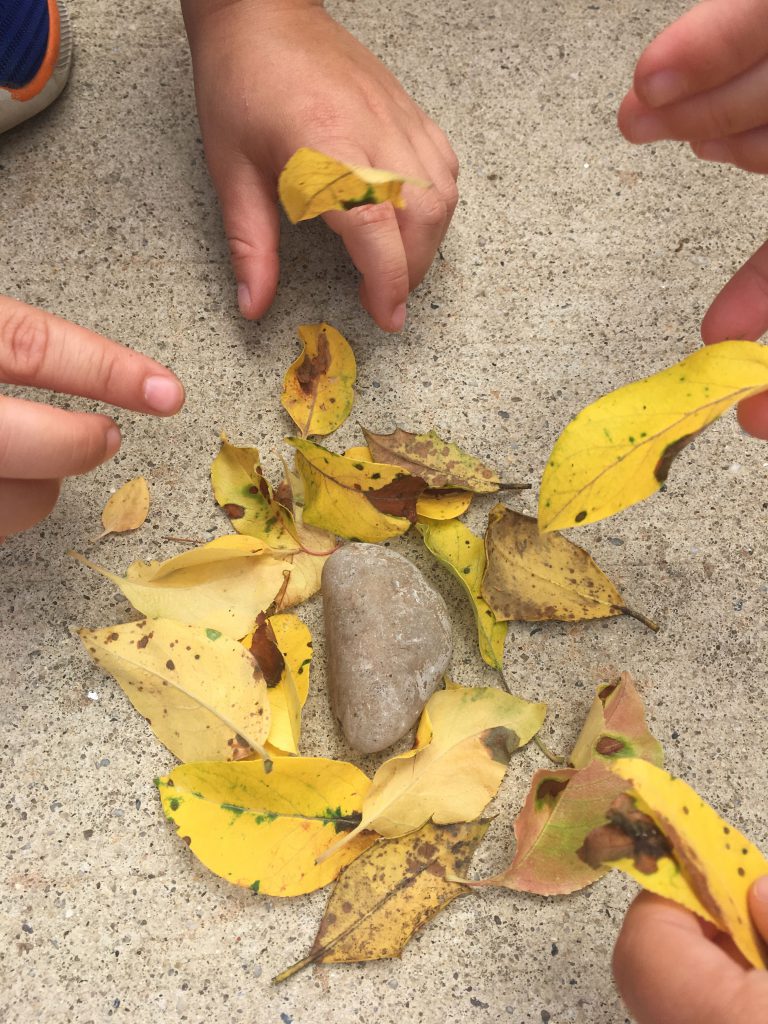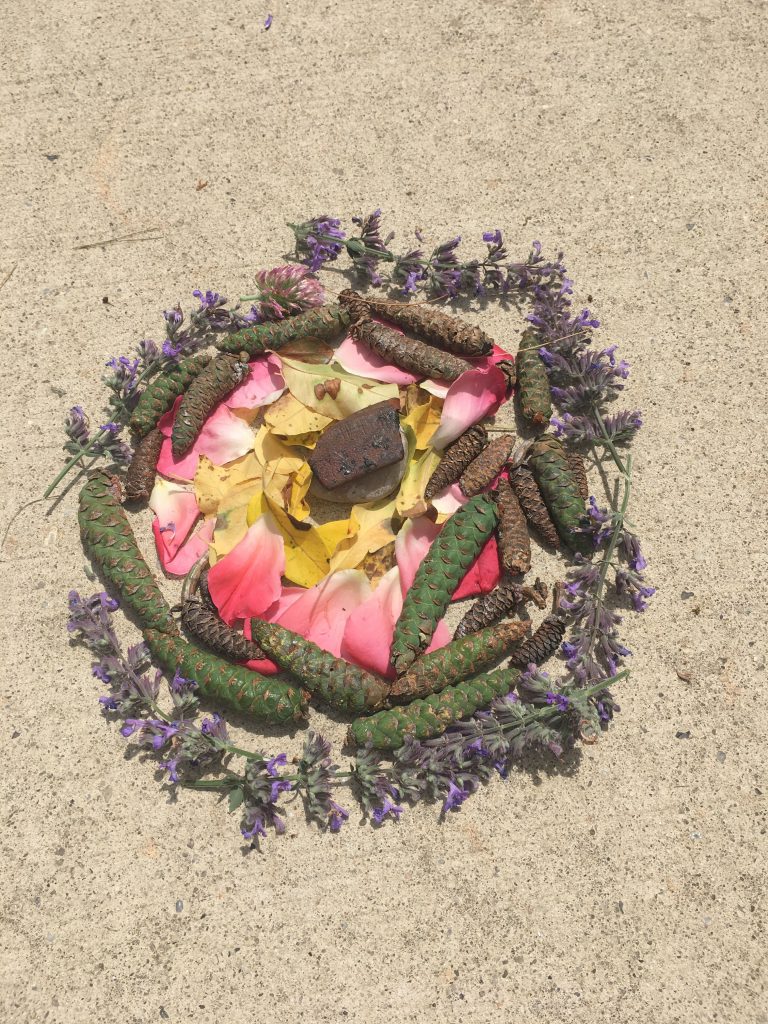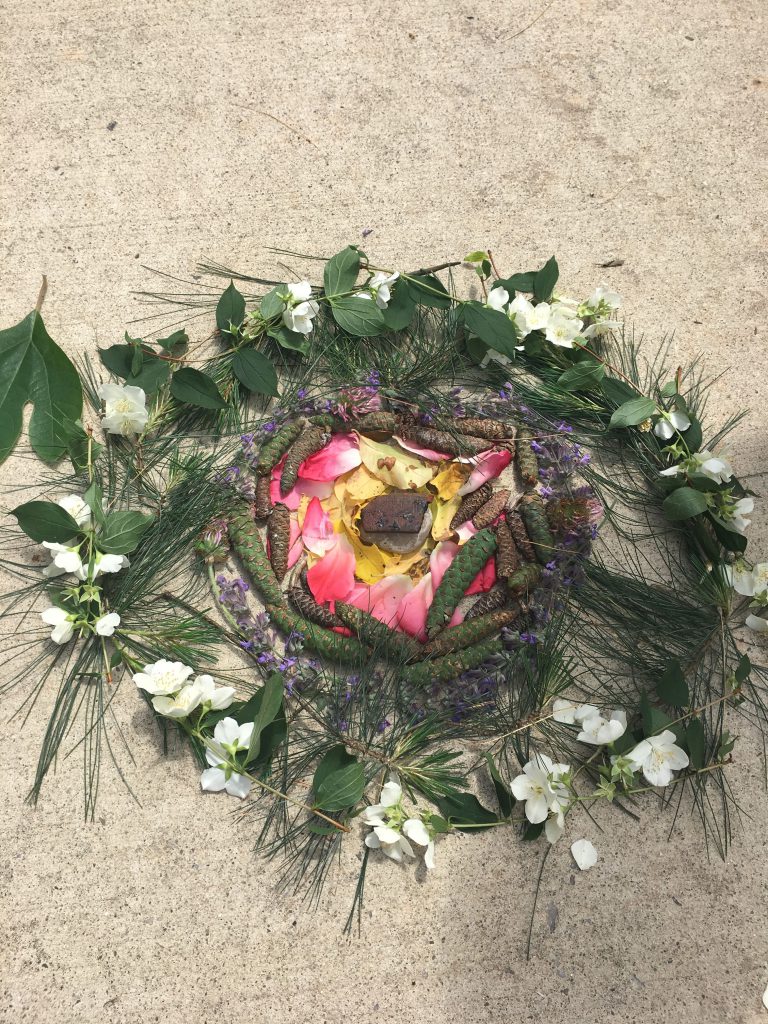A selection of some of my favorite lesson plans to share and inspire a love of learning through science, nature and creativity!
Mandala Art
The practice of Mandala art originates in the Buddhist religion and spans over thousands of years and many religions as a form of meditation and recentering. Create a mandala utilizing earth’s elements to find a perfect way to find grounding in this challenging time.
Steps:
- Collect materials: bucket, nature items like sticks, stones, pine cones, seeds, petals, leaves, acorns, pine needles, stems, shells, bark etc…
Procedure:
- Take time to walk outside and take in all the senses around you. Find grounding by Feeling the strength of the earth below your feet. Put your face up towards the sun. Allow yourself to walk more slowly than usual and see the more intricate pieces of nature that you may otherwise overlook.
- While you walk, collect items that inspire you to create your mandala. Be sure to take several pieces of each element. Be kind to the earth and do your best to collect pieces that have already fallen or are in abundance.
- After your walk, sort your pieces to create categories of your elements. It can be by type, color, texture, length etc.
- Choose one centering piece to begin your mandala.
- Using ONE element at a time, create circles around your centering piece . Radiate out each time as each consequent circle grows larger with each element ring.
- When you have finished, take a picture of your mandala to capture your masterpiece.
Notes:
The mandala is often destroyed shortly after its creation to signify that nothing lasts forever. This may seem like a hard action, but is actually very releasing in these hard times to be reminded that nothing lasts forever and our current global climate will not stay like this forever.
The habit of creating and collecting mandalas is a transformative practice that is intended to restore inner peace and wisdom within.
Dream catchers are based off the practice of mandala art.
If weather or environment does not allow you to create with earth’s elements, use elements from around the house to create!
______________________________________________________________________________

SPIDER WEB
Create a spider web in a doorway that will not allow bugs of all sizes to pass through.
Spiders create beautiful webs with an engineering purpose: to catch other insects to eat. Different species of spiders will create different styled webs based on their dietary needs. Pretend you’re a spider trying to catch food, build a web that is designed to not let those insects through and ALSO strong enough to have them stay on the web!
Steps:
1.Collect materials for the web- painters tape works best, but so does masking tape or even string.
2. Collect materials for the “insects”- be creative! Cotton balls, pom poms, yarn rolled into balls, sock fuzz, dryer lint rolled into balls, ping pong balls, newspaper, pebbles, sticks etc… Try to find different sizes of materials of different widths or weights to challenge yourself.
Procedure:
- Using the tape, create an initial web across a doorway.
- Standing about 3-5 feet away, toss the “insects” at the web and observe your results. Are the insects being caught on the web? Are some spaces too wide? Is the tape not strong enough to hold the insect on?
- Make adjustments to your design with the goal of catching all of the bugs.
- Continue trying to catch all the insects in your web and make necessary adjustments to it until most, if not all, of your insects are caught!
Challenge:
- Challenge yourself by standing further away from the web when tossing the insects.
- Toss heavier weight objects at the web to see what’s the largest item you can successfully hold on the web for 5 seconds (or longer!)
- Use string instead of tape to create the web for a real challenge! Creating the correct design will be imperative for holding the objects without the stickiness of the tape. (Think triangles!)
Note from an entomologist:
The Golden Silk Orb-Weaver (Nephila clavipes) preys primarily on flying insects so it builds huge webs up high in the canopy like a net. The orchard spider (Lecauge venusta) orients their smaller webs horizontally and close to the ground in order to catch small walking bugs like ants and beetles.



